Applying Porter's Five Forces: VR in Civil and Building - INF 80018
VerifiedAdded on 2023/04/08
|11
|647
|345
Presentation
AI Summary
This presentation employs Michael Porter's Five Forces model to analyze the strategic value of virtual reality (VR) technology within the civil and building construction industry. It explores how VR influences industry structure and competitiveness by addressing forces exerted by buyers, substitute products, new entrants, and suppliers. The presentation highlights VR's ability to provide a competitive edge through workforce reduction, advanced 3D modeling, and automation of resource management. It also discusses how VR enhances buyer power by providing real-time project updates and deadline predictions. Furthermore, the analysis emphasizes VR's role in mitigating competitive threats and streamlining collaboration, ultimately transforming traditional construction methods and fostering innovation. The presentation references academic sources to support its claims and provide a comprehensive understanding of VR's strategic implications in the construction sector.
1 out of 11
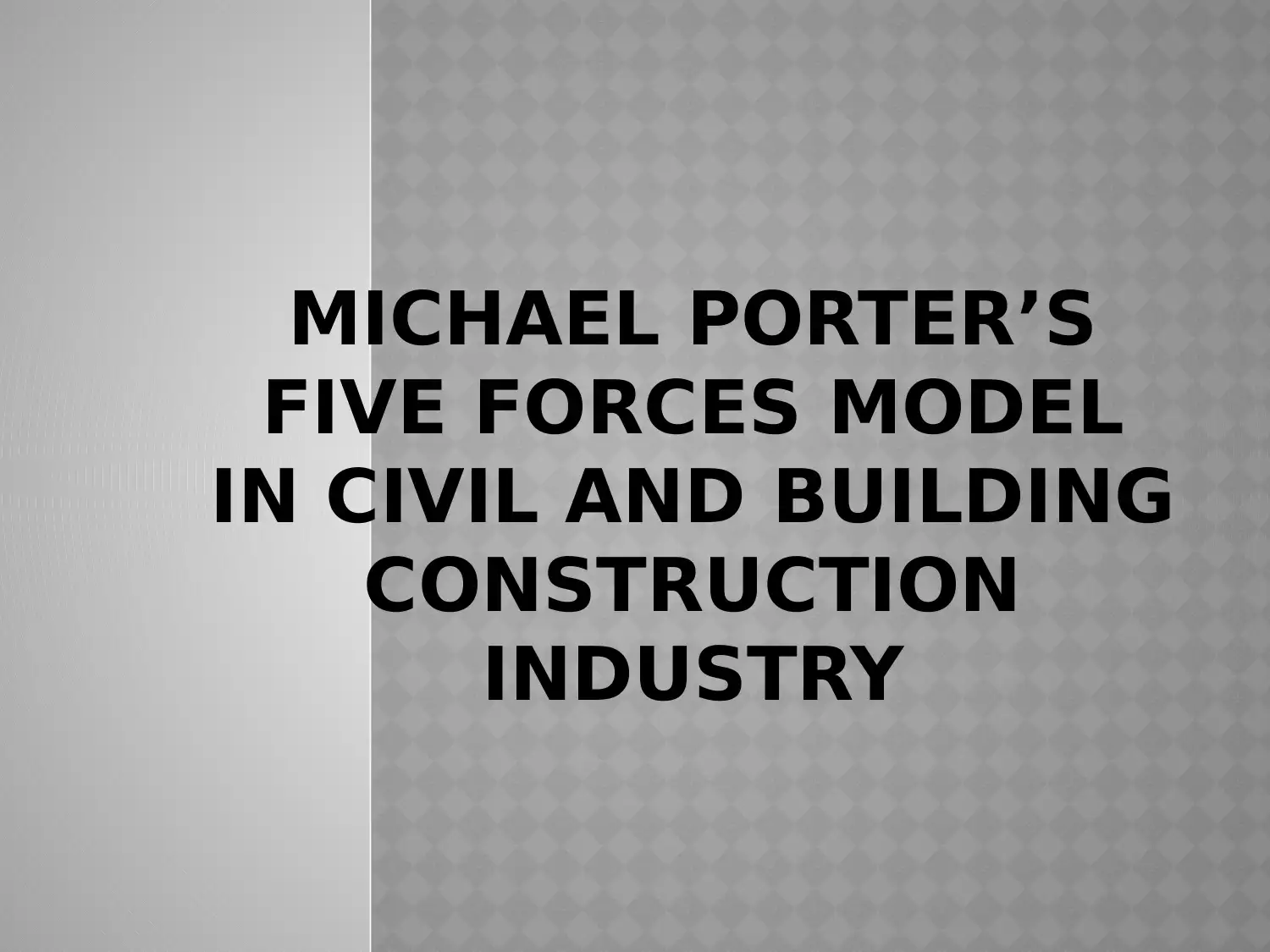
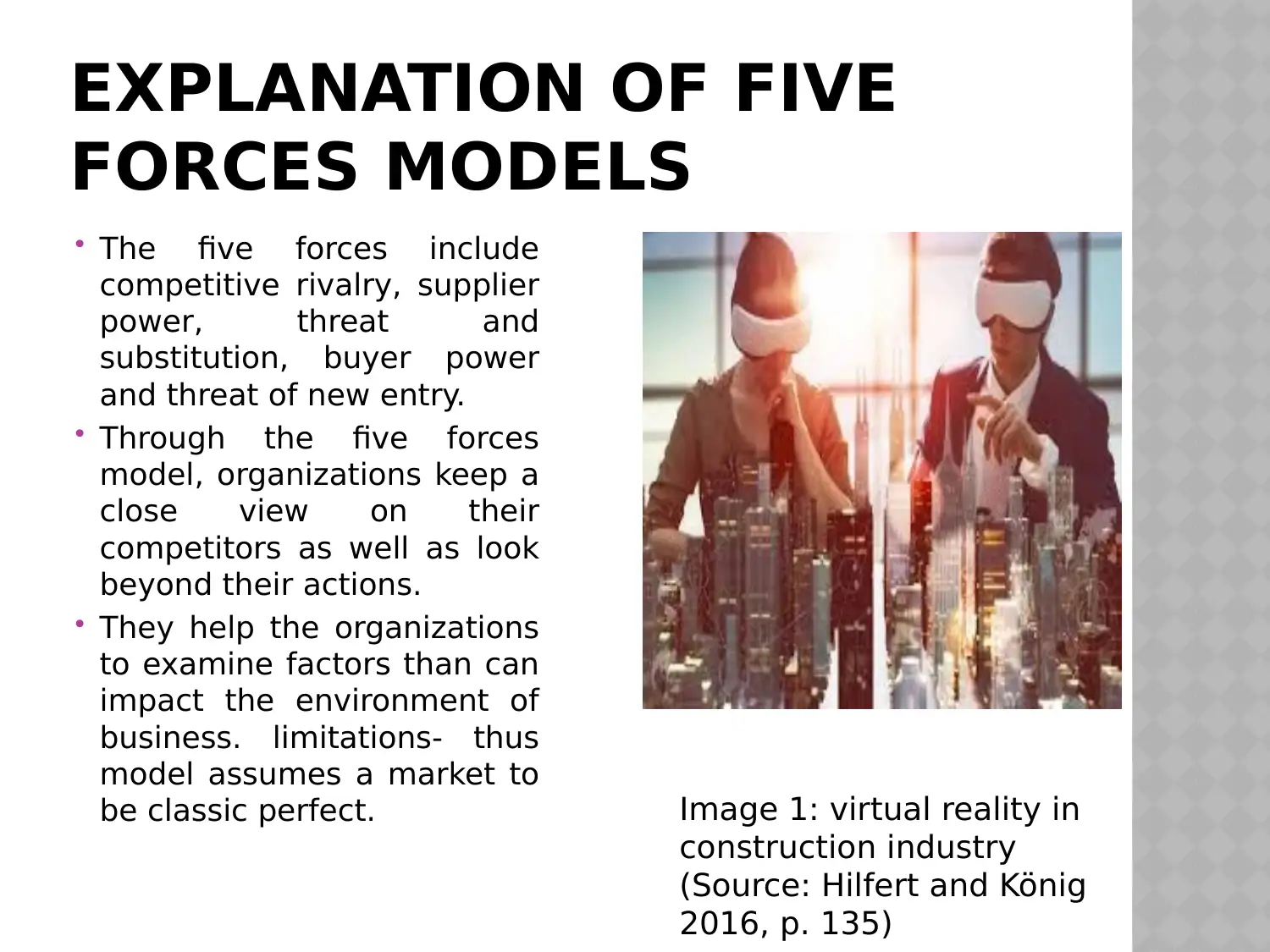
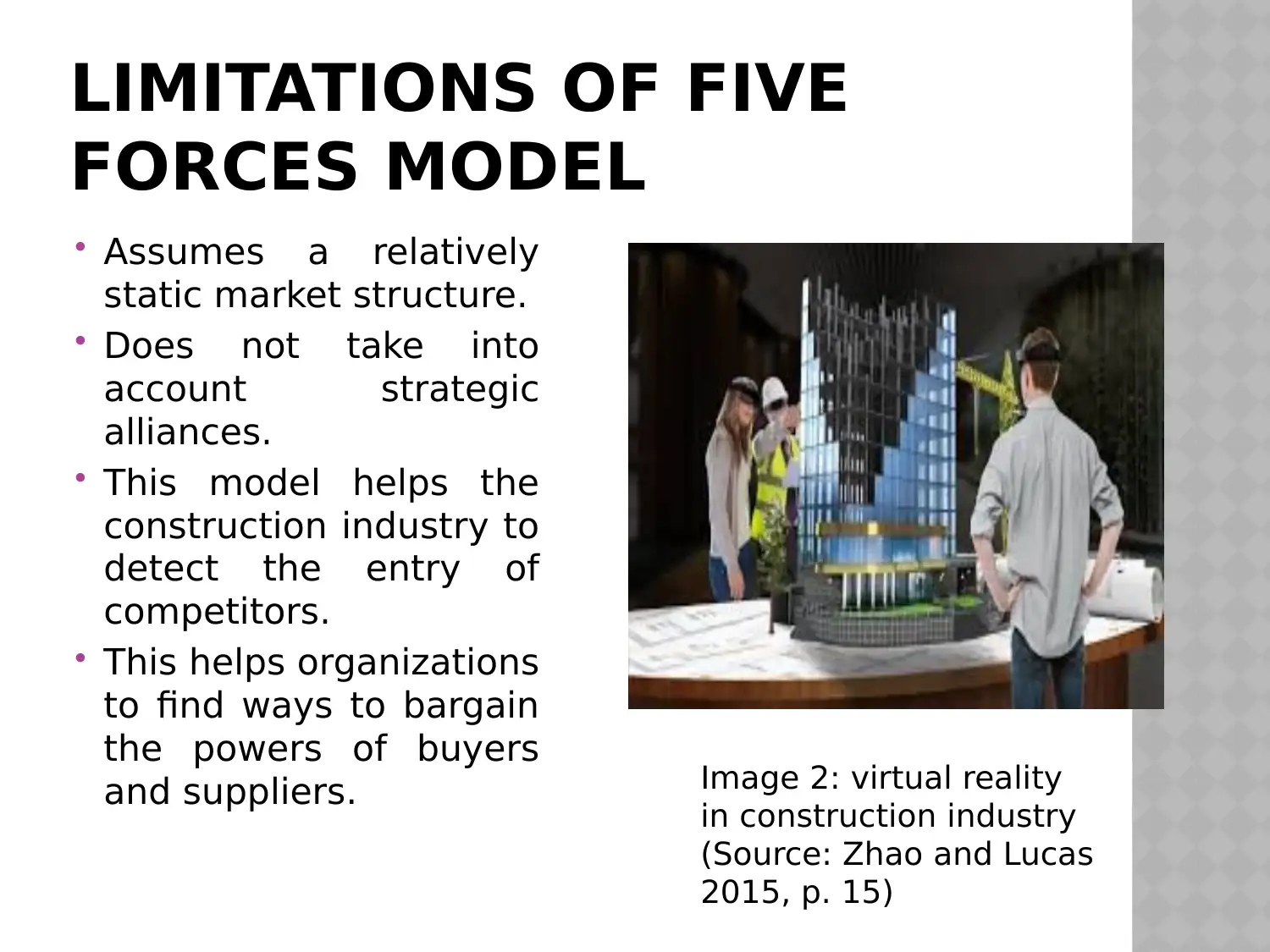

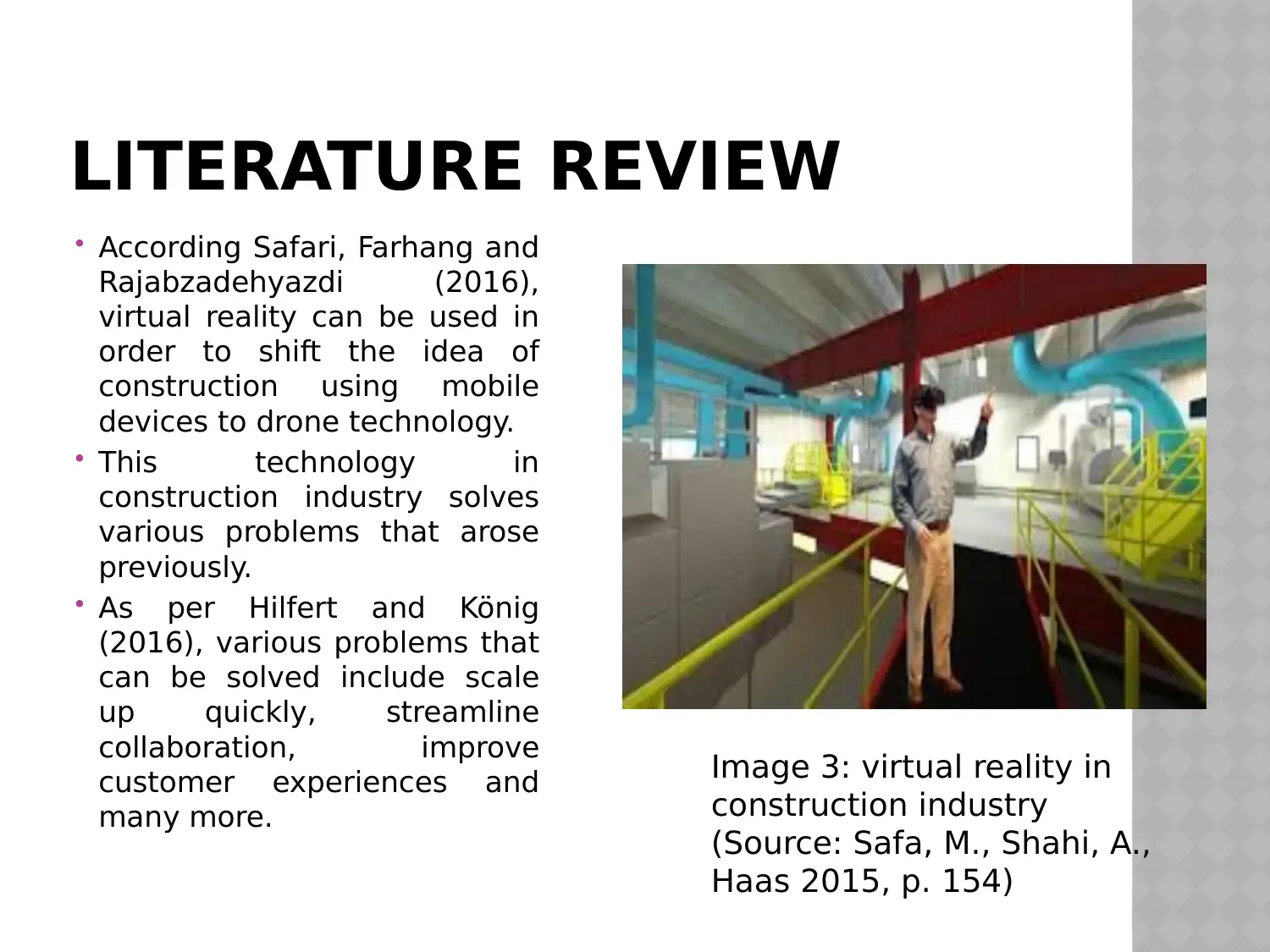
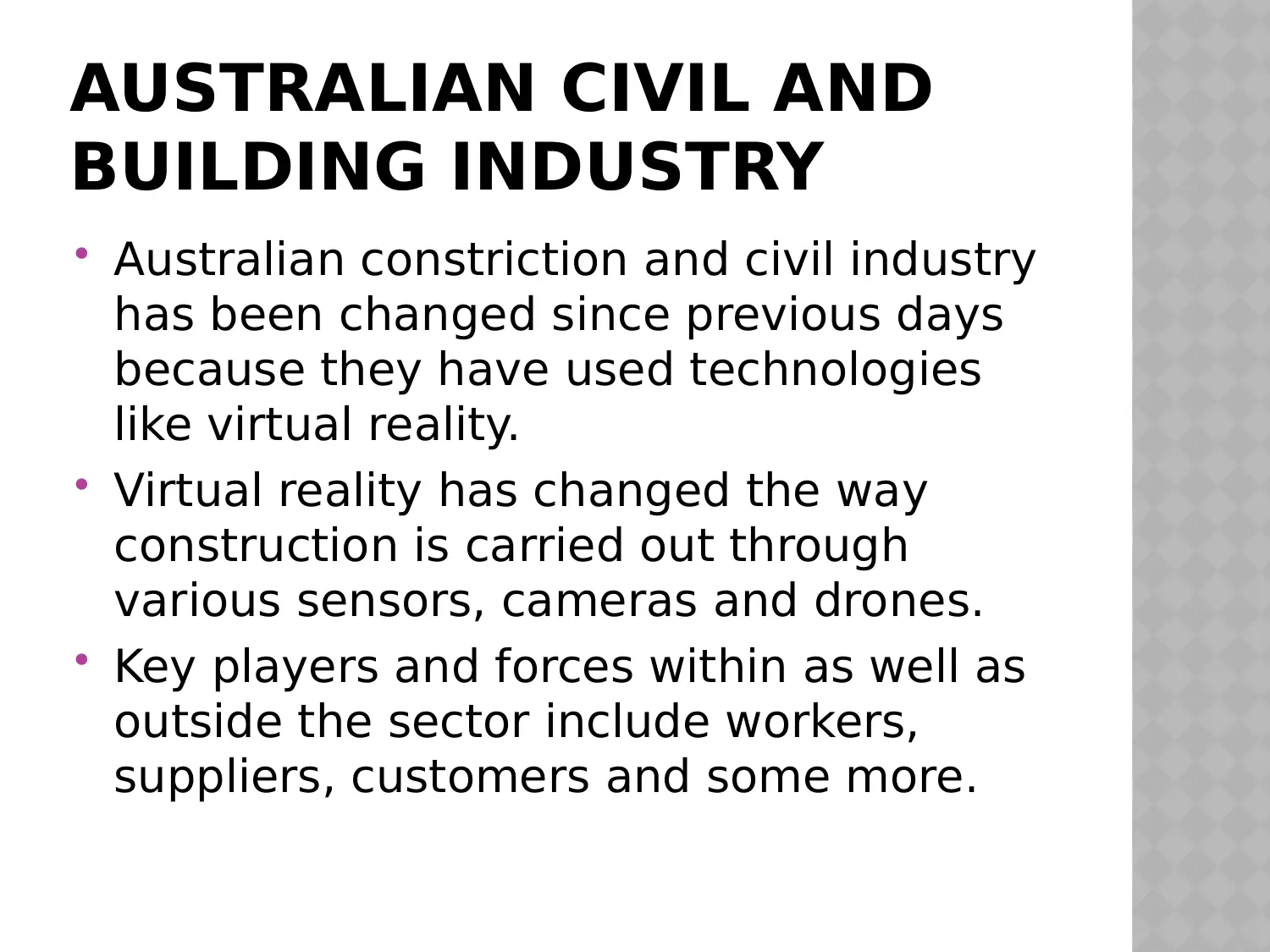
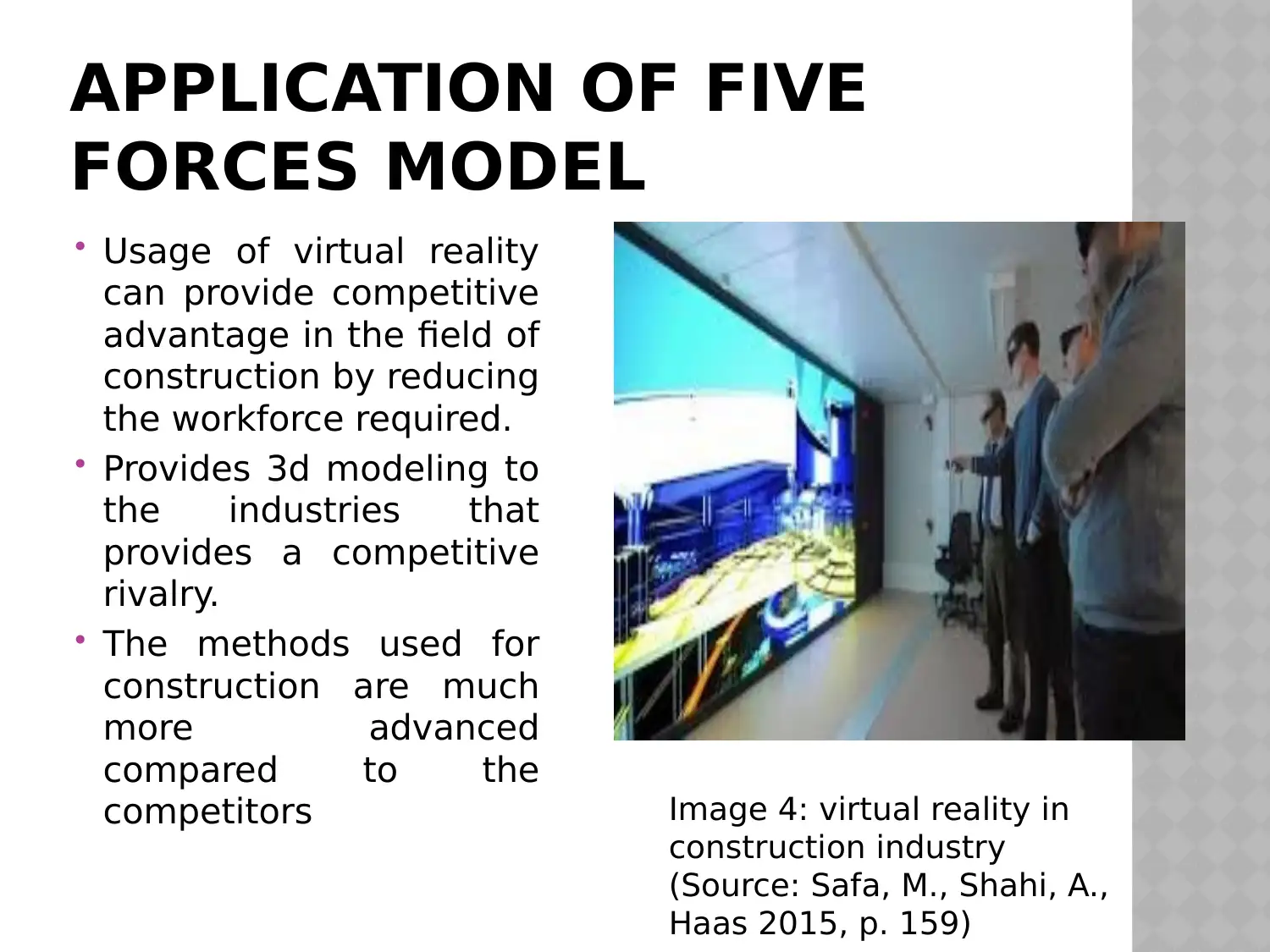
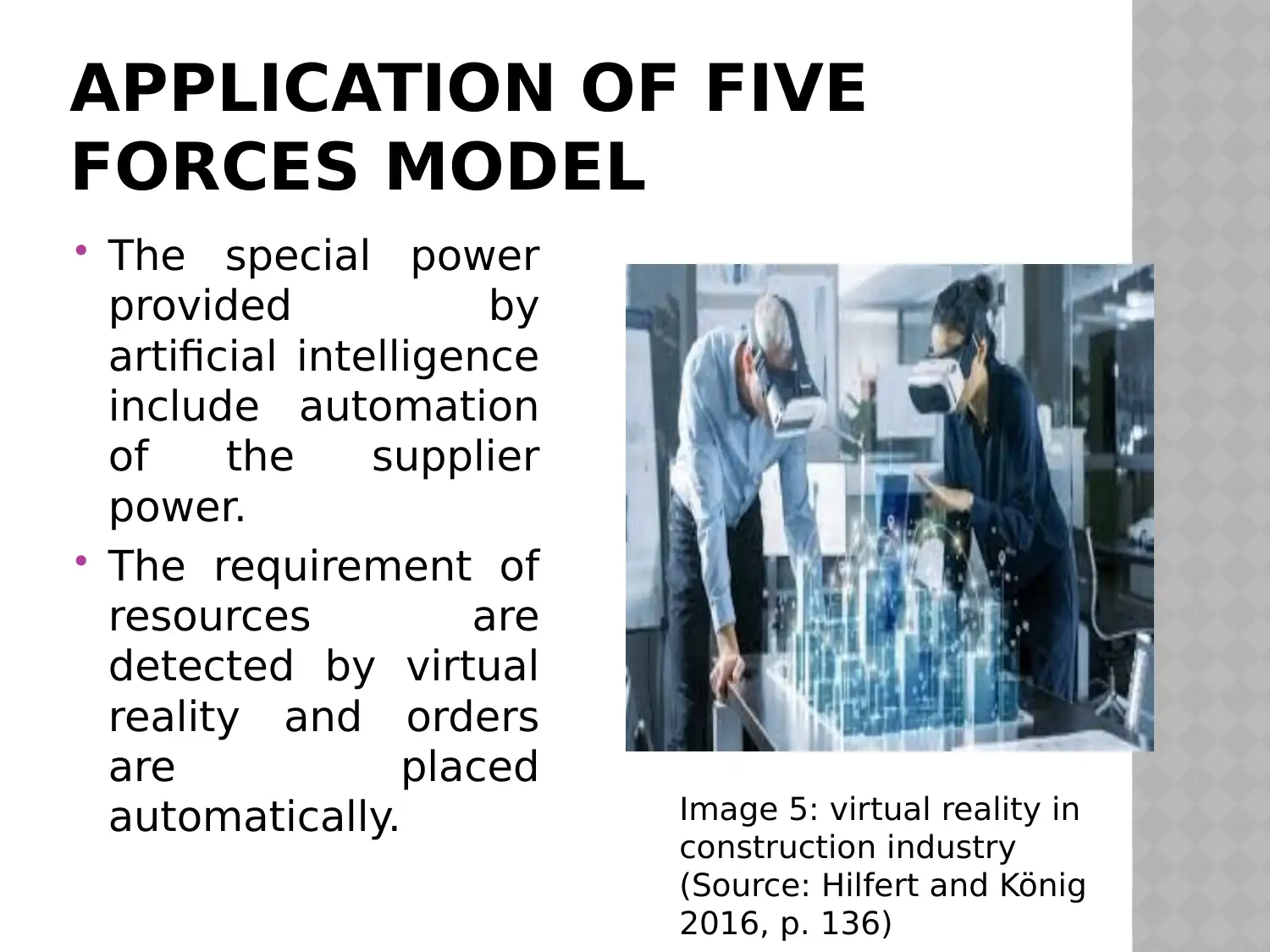
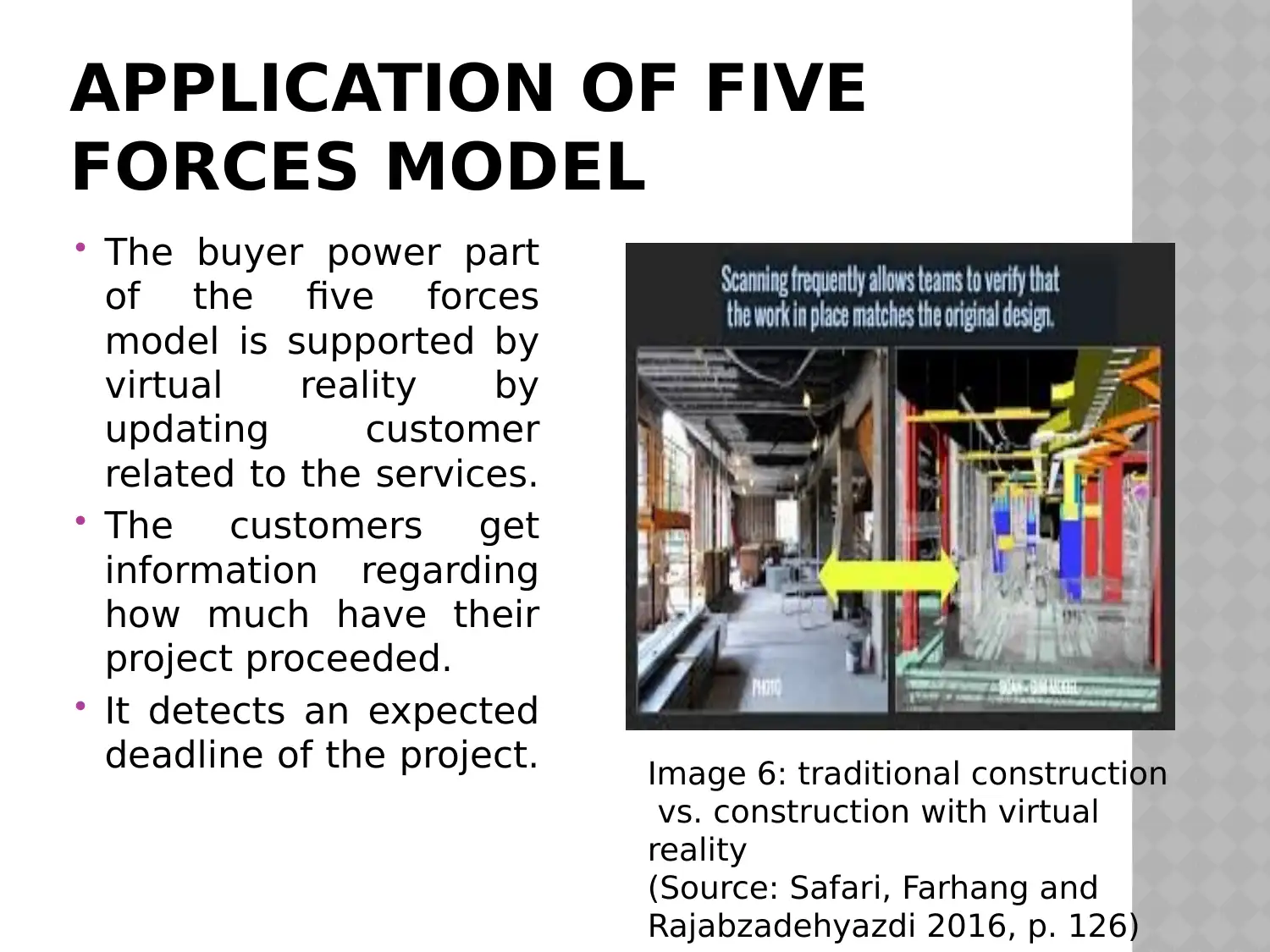
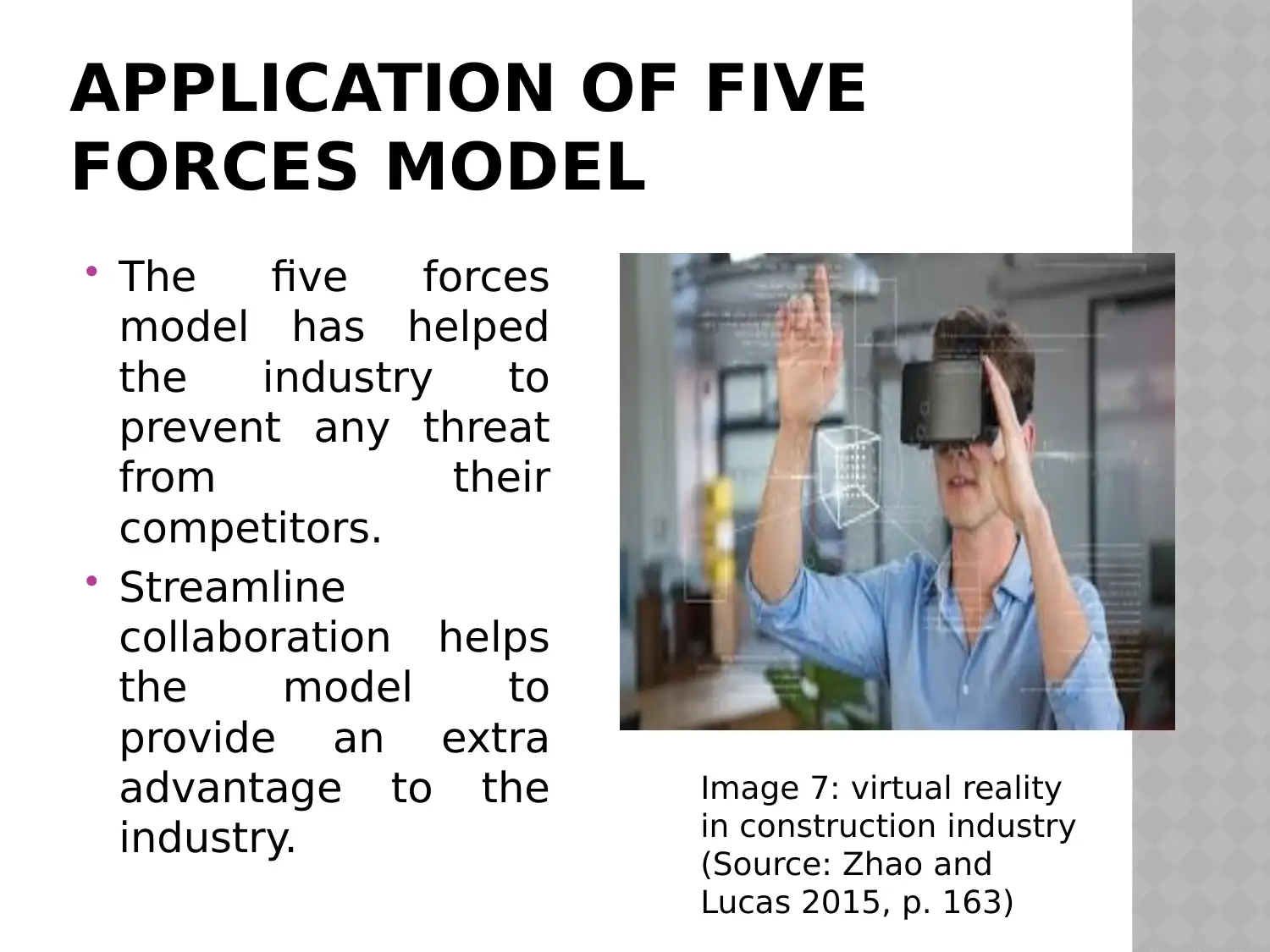
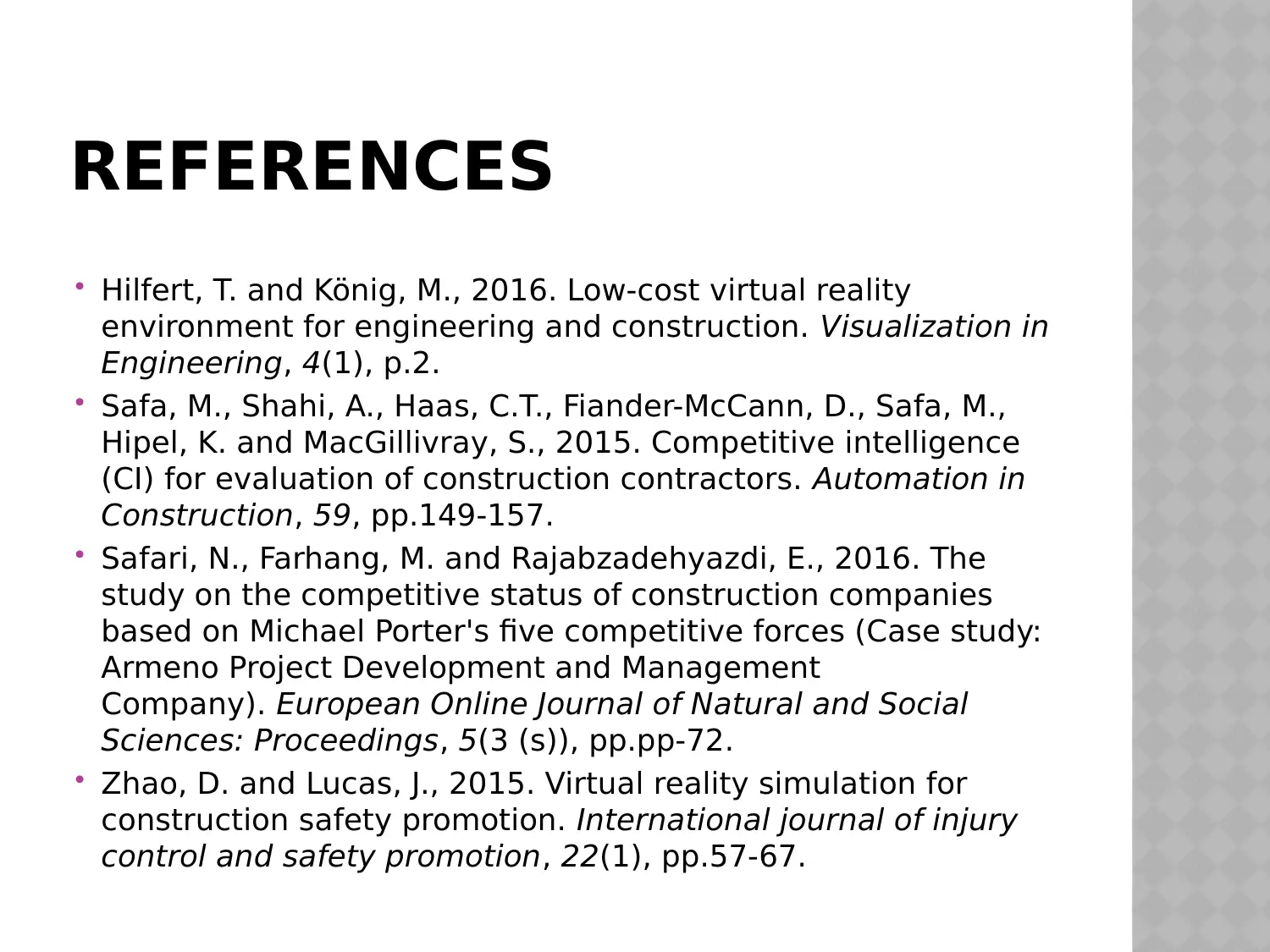







![[object Object]](/_next/static/media/star-bottom.7253800d.svg)